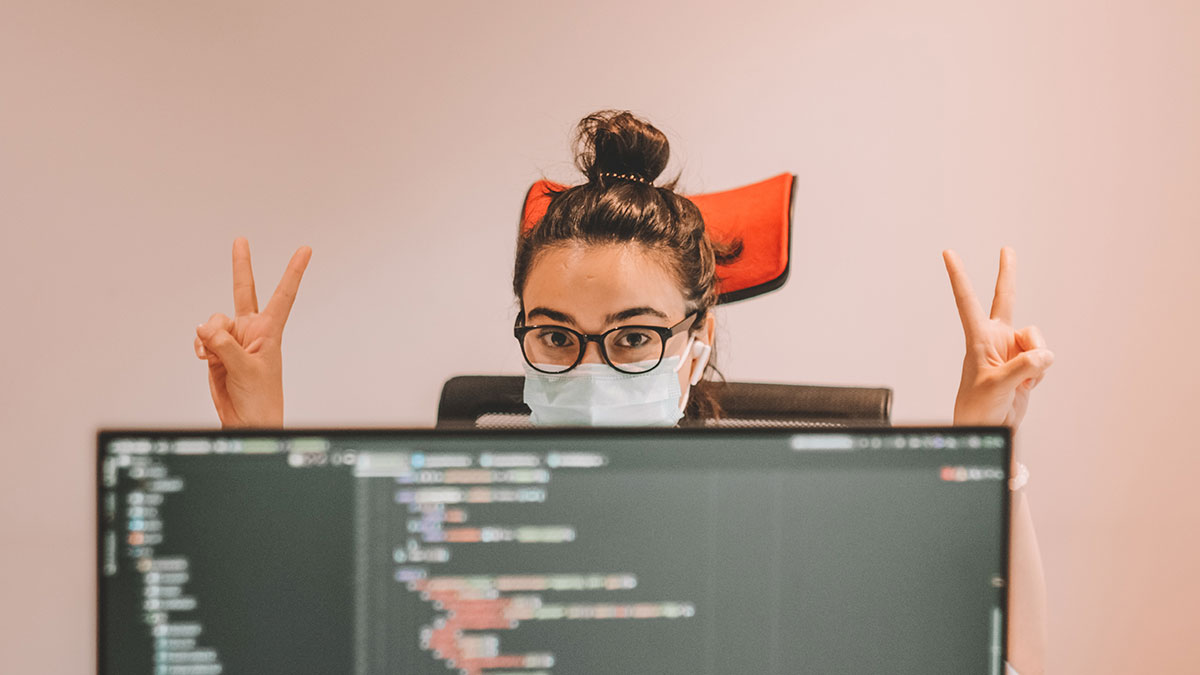Since Covid-19 was declared a pandemic on the 11th of March 2020 the world has had to completely change. The way we shop, socialise and work has had to be reevaluated, redefined and revolutionised. Although for the majority of workers their workplace environment remained mostly the same, for some of us, we started working at our kitchen table, on mobile phones while trying to encourage children to concentrate on their online lessons. When workers had previously been campaigning to work from home, this is not what they meant!
In this document we summarise the issues and innovation that 2021 has brought us as well as look ahead to 2022 and what we predict is awaiting us.
How has the world of work changed in 2021?
OVERWHELMING AND OVERLOADED
Front line workers have been essential in getting us through this pandemic, but that level of reliability has come with a huge amount of stress and pressure on those workers. Not only did they never have the choice of working from home but they instead went into work every day taking their lives into their own hands. They didn’t have the equipment needed, they themselves were getting sick and infected or working the shifts for their colleagues who were and on top of that, had to worry about bringing the deadly virus home.
No matter the job title, many across the world worked tirelessly to get themselves and their organisations through the crisis. That level of energy was only sustainable for so long with many now reporting a drop in productivity, an impact on their motivation and a huge impact on their health.
Working from home – the great split opinion
Many people have simply loved the change that working from home (WFH) has brought to their lives, less of a commute, a lower feeling of being controlled and an increased level of agency. It is evident though that from a societal perspective there is a “class” divide, with those who can work from home predominantly in higher paid, manual roles. Those in higher paid roles were also more likely to have a laptop at home connected to great Wi-Fi, with a desk and a suitable chair on hand and the luxury of less distractions. Others were working on mobile phones, at their kitchen table while battling with their mute button as children or roommates poured in on top of them during meetings.
Work Creep
An increasing trend of employees struggling to set boundaries around their work has been seen. This inability to switch off has caused tensions within the home with families unsure when parents are working, and when children are off school.
Cohort Concerns
The pandemic has been a nightmare for the under 25 cohort and slightly more so the male population – between 16 – 25. While formal learning can be delivered by zoom it is the tacit knowledge and the informal learning that they are missing most such as seeing how people manage other people, situations, interactions and other nuances that can’t be spotted or picked up in a virtual world.
Women have also been disproportionately affected by the pandemic, with some having to leave the workforce due to the lack of support they have been given. Organisations need to create a ‘female friendly’ workplace that is fair to all.
Healthy Performance
One of the biggest findings in our 2021 data shows the relationship between employee’s personal health and their on-the-job performance. Our data showed a clear correlation between employees who self-report poor personal health status and those who report negatively on the statements that relate to leadership/organisation. Equally those who self-report good health status in turn report, in the main, mostly positive views on the leadership and the organisation. Our data also showed some significant correlations between an employee’s sense of financial wellbeing and their self-reported health.
Healthy Workforce
Sleep deprivation spread across the world as fast as the pandemic with fear and uncertainty turning people into an anxiety society full of anxiety unable to turn away from covid filled media reports. Sleep quantity was only one metric of concern as the quality became even more important. Many employees prioritised their work over exercise not realising the connection between stress and exercise. Organisations need to prioritise the physical fitness of their workforce in 2022. Campaigns that focus attention on this area will benefit the individuals but also the levels of camaraderie that results from working together to achieve a goal.
EMPLOYER BRANDS – PASSING THE TEST?
Organisations have been tested like never before. Some really stepped up to the mark and excelled in terms of putting the health of their employees first. Others let their true colours shine through and many won’t forget. Some organisations’ employer’sorganisations employer’s brands took a real hit while others have passed the test with flying colours. Decision making in a crisis uncovers some home truths and uncovers real leadership credentials. When employees felt their organisation had been genuinely supportive of them and their health, plus were a good corporate citizen in their community, their responses were more positive or their comments in the open-ended questions were glowing appreciations.
2022 and beyond..
Making hybrid healthy
We have seen through our data a great divide emerging between those organisations with a more profound dichotomy, where some staff can fulfil their roles remotely, while their colleagues must be on site. Deep down, employees do realise their job function requires them to be present but there is a feeling, naturally enough, of unfairness. Why do we have to get up early to commute, arrange child-minding, risk exposure, have no canteen facilities, have few colleagues to socialise with while the rest of the staff sit at home in their pyjamas? There may have been a degree of tolerance during the initial waves of the pandemic, but when a hybrid model is institutionalised, these roles will still need to be present and this issue will become even more pronounced, with significant implications for engagement and a challenge for managers at all levels. Managers will become the touchpoint between the organisation and the individual employee in this hybrid model. Managers will need to upskill to pick up on signs that employees are struggling. ‘My door is always open’, may have been acceptable historically as a mantra for employees to touch base with their manager, however, in the remote sphere, good leaders need to be more “conscious”, more proactive and initiate deliberate and frequent contact with their teams both collectively and individually.
The Year Of Women’s Health
Organisations will be forced to respond in 2022. Some exemplars have been busy launching policies in the arena of women’s health and 2022 will see others follow suit. Employers must create better workplaces for women which should be free from discrimination and sexism, they should eliminate the gender pay gap within their organisation and create policies that will help staff through difficult life events related to fertility, maternity, perimenopause and menopause.
Job Crafting
Not every job can be re-crafted, and if employees see colleagues in different roles allowed greater flexibility they will be frustrated when their requests are denied with the resulting frustration and disengagement. Organisations need to be up-front and honest with all employees about the potential for flexibility and avoid the temptation to agree deals on the side with some employees “on the QT”!
Working out loud
Working out loud requires everybody to post what they are working on at any particular time. Having first experienced it in Denmark in an experiment of a four-day work week the company encouraged staff to work using the Agile Methodology ‘sprints’ concept or applying the Pomodoro (tomato timer) technique invented by Francesco Cirillo, to ensure they would not be disturbed they would post what they were working on. Working out loud not only acts as a reassurance to the person paying their salary but also helps an employee actually see what they have achieved in their day/week/month etc.
Village work hub
The debate has raged about the pros and cons of remote working versus office based and the Hybrid version is winning right now, but is there a third way. The ultimate trade off of a commute-free work environment allowing for greater focus and non-distracted work time balanced against the isolation of lone working coupled with the lack of random interactions, gossip accumulation and in the moment learning opportunities may have a solution. The village work hub allows for a thriving local village with all the environmental benefits of a walking/cycling commute to a local work hub with all the diversity and inclusion a person may need. As this hub is full of many employees from many different companies it certainly will stop siloed in house thinking with exposure to a multitude of employees, from many different industries, replacing dormitory towns with hyper connected communities.
Data driven decisions
Data driven evidence-based decision making will be the order of the day. Everything from performance and health will be quantified and managed through algorithms and analytics.







